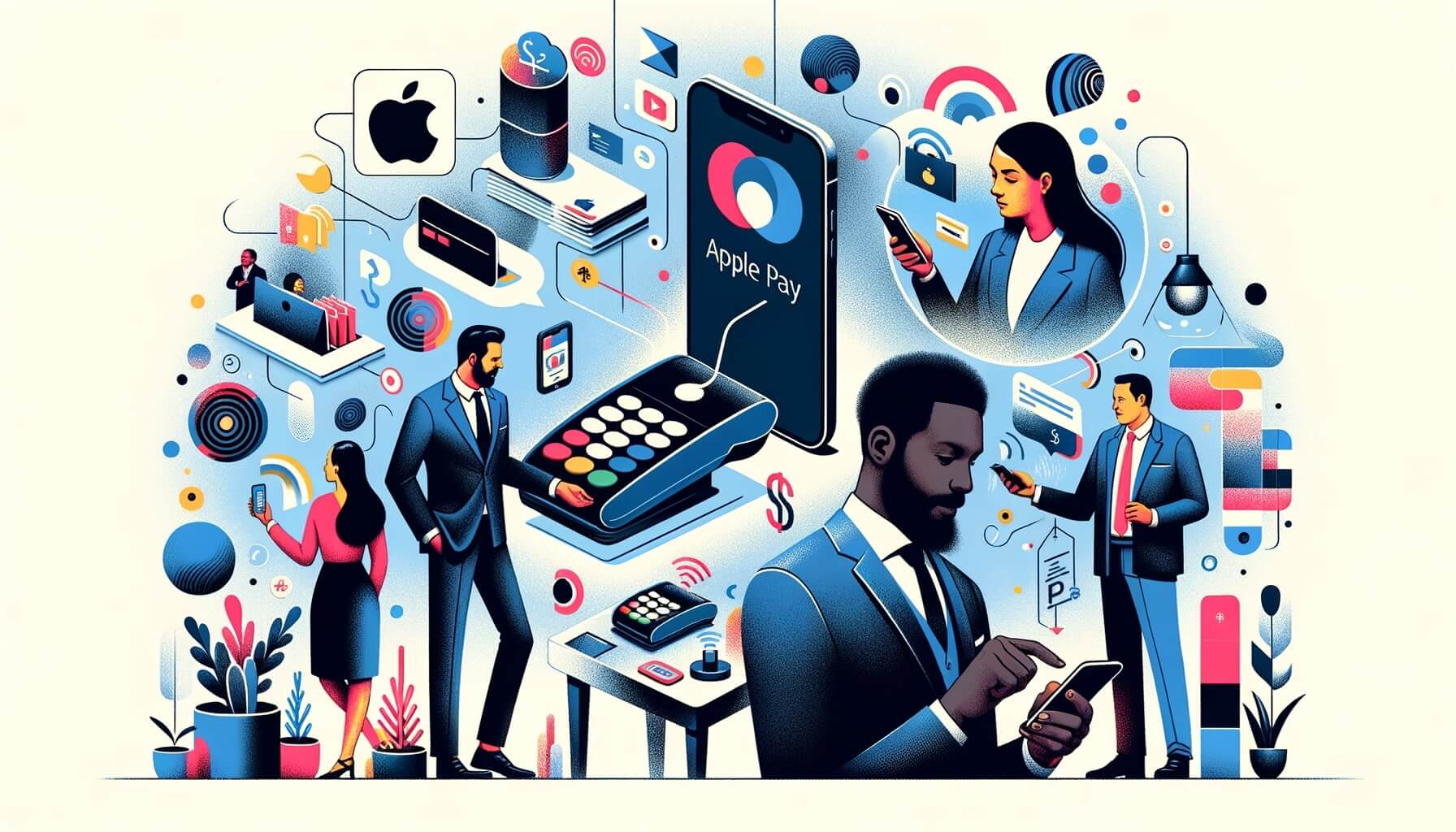
By DonnaELopez May 10, 2025
In today’s fast-paced digital world, consumers are constantly looking for convenient and secure ways to make payments. Apple Pay has emerged as a leading payment technology that offers a seamless and secure way for customers to make purchases using their Apple devices. With the rise of mobile payments, it is essential for businesses to understand how to leverage Apple Pay to enhance the customer experience and drive sales.
Apple Pay is a mobile payment and digital wallet service developed by Apple Inc. It allows users to make payments in stores, online, and in apps using their Apple devices, such as iPhones, iPads, and Apple Watches. By simply adding their credit or debit card to the Apple Wallet app, users can easily make contactless payments at participating merchants.
As of 2025, Apple Pay has become increasingly popular among consumers, with millions of transactions processed daily. According to Statista, the number of Apple Pay users worldwide is projected to reach over 500 million by 2025. This growth highlights the importance for businesses to adopt Apple Pay as a payment option to cater to the evolving needs of their customers.
Setting Up Apple Pay for Your Business

Before you can start accepting Apple Pay payments at your business, you need to set up Apple Pay on your devices and integrate it into your payment processing system. Here is a step-by-step guide on how to set up Apple Pay for your business:
1. Check Device Compatibility: Ensure that your POS terminal or payment processing system supports Apple Pay. Most modern terminals are equipped to accept contactless payments, including Apple Pay.
2. Enable NFC: Near Field Communication (NFC) is the technology that enables contactless payments. Make sure that NFC is enabled on your POS terminal or payment processing system.
3. Contact Your Payment Processor: Reach out to your payment processor or merchant services provider to enable Apple Pay on your account. They will provide you with the necessary information and support to set up Apple Pay.
4. Add Your Merchant ID: Obtain a Merchant ID from Apple and add it to your payment processing system. This unique identifier is required to process Apple Pay transactions.
5. Test Transactions: Before going live with Apple Pay, conduct test transactions to ensure that everything is set up correctly and that payments are processed smoothly.
6. Train Your Staff: Educate your staff on how to accept Apple Pay payments and troubleshoot any issues that may arise during transactions.
By following these steps, you can successfully set up Apple Pay for your business and start accepting contactless payments from Apple Pay users.
Accepting Apple Pay in Your Physical Store

Accepting Apple Pay in your physical store is a simple and efficient way to enhance the customer experience and streamline the checkout process. Here are some tips on how to accept Apple Pay in your physical store:
1. Display Apple Pay Logo: Place the Apple Pay logo prominently at your checkout counter to inform customers that you accept Apple Pay as a payment option.
2. Train Your Staff: Ensure that your staff is trained on how to accept Apple Pay payments and assist customers who may have questions or need help with the process.
3. Enable Contactless Payments: Make sure that your POS terminal is set up to accept contactless payments, including Apple Pay. Customers can simply hold their Apple device near the terminal to complete the transaction.
4. Promote Apple Pay: Encourage customers to use Apple Pay by highlighting the benefits, such as speed, convenience, and security. Consider offering incentives or discounts for customers who use Apple Pay.
5. Provide Receipt Options: Offer customers the choice to receive a digital receipt via email or text message when they make a purchase using Apple Pay. This eliminates the need for paper receipts and enhances the overall shopping experience.
By implementing these strategies, you can effectively accept Apple Pay in your physical store and provide a seamless payment experience for your customers.
Integrating Apple Pay into Your E-commerce Website

In addition to accepting Apple Pay in your physical store, it is essential to integrate Apple Pay into your e-commerce website to cater to online shoppers. Here is a guide on how to integrate Apple Pay into your e-commerce website:
1. Choose an E-commerce Platform: Select an e-commerce platform that supports Apple Pay integration, such as Shopify, WooCommerce, or Magento. These platforms offer plugins or extensions that make it easy to add Apple Pay as a payment option on your website.
2. Enable Apple Pay on Your Website: Follow the instructions provided by your e-commerce platform to enable Apple Pay as a payment option on your website. This typically involves adding your Merchant ID and configuring the settings for Apple Pay.
3. Display Apple Pay Button: Place the Apple Pay button prominently on your checkout page to encourage customers to use Apple Pay. The button should be easily visible and clickable for a seamless checkout experience.
4. Optimize for Mobile: Ensure that your website is mobile-responsive and optimized for Apple devices. This will provide a smooth shopping experience for customers using Apple Pay on their iPhones or iPads.
5. Test Transactions: Conduct test transactions on your website to verify that Apple Pay is working correctly and that payments are processed without any issues.
By integrating Apple Pay into your e-commerce website, you can attract more customers, increase conversion rates, and provide a convenient payment option for online shoppers.
Maximizing Security with Apple Pay

One of the key benefits of using Apple Pay is the enhanced security features that protect both customers and businesses from fraud and unauthorized transactions. Here are some ways to maximize security with Apple Pay:
1. Tokenization: Apple Pay uses tokenization to generate a unique token for each transaction, instead of sharing the actual credit or debit card number. This adds an extra layer of security and reduces the risk of card information being compromised.
2. Touch ID or Face ID: Apple Pay requires biometric authentication, such as Touch ID or Face ID, to authorize payments. This ensures that only the authorized user can make a transaction, adding an additional level of security.
3. Secure Element: Apple Pay stores payment information in a secure element on the device, which is separate from the operating system. This hardware-based security feature protects sensitive data and prevents unauthorized access.
4. Two-Factor Authentication: Apple Pay supports two-factor authentication for added security. Customers may be required to enter a passcode or verify their identity before completing a transaction, reducing the risk of fraudulent activity.
5. Fraud Detection: Apple Pay uses advanced fraud detection technology to monitor transactions and identify suspicious activity. Businesses can benefit from real-time alerts and notifications to prevent fraudulent transactions.
By leveraging these security features, businesses can instill trust in their customers, protect sensitive payment information, and minimize the risk of fraud when accepting Apple Pay payments.
Understanding Apple Pay Fees and Costs
While Apple Pay offers a convenient and secure payment solution for businesses, it is important to understand the fees and costs associated with using the service. Here is an overview of the fees typically associated with Apple Pay:
1. Transaction Fees: Apple Pay charges a small fee for each transaction processed through the service. The fee may vary depending on the type of transaction, such as in-store, online, or in-app purchases.
2. Interchange Fees: In addition to Apple Pay transaction fees, businesses may also incur interchange fees charged by credit card networks and issuing banks. These fees are typically a percentage of the transaction amount and may vary based on the type of card used.
3. Monthly Fees: Some payment processors or merchant services providers may charge a monthly fee for enabling Apple Pay on your account. This fee covers the cost of maintaining the service and providing support to businesses.
4. Hardware Costs: Businesses may need to invest in compatible POS terminals or payment processing equipment to accept Apple Pay payments. These hardware costs should be factored into the overall expenses of using Apple Pay.
5. Chargeback Fees: In the event of a disputed transaction or chargeback, businesses may incur additional fees from their payment processor or issuing bank. It is important to understand the chargeback process and associated fees to mitigate risks.
By understanding the fees and costs associated with Apple Pay, businesses can make informed decisions about implementing the service and assess the impact on their bottom line.
Leveraging Apple Pay for Marketing and Customer Loyalty
In addition to providing a convenient payment option for customers, Apple Pay can also be leveraged as a marketing tool to drive sales and enhance customer loyalty. Here are some strategies for leveraging Apple Pay for marketing and customer loyalty:
1. Promotional Offers: Create exclusive promotions or discounts for customers who use Apple Pay to make a purchase. This incentivizes customers to use Apple Pay and can help drive sales for your business.
2. Loyalty Programs: Integrate Apple Pay with your loyalty program to reward customers for their repeat purchases. Offer points, discounts, or special perks for customers who use Apple Pay regularly.
3. Personalized Recommendations: Use customer data from Apple Pay transactions to provide personalized product recommendations or offers. This targeted marketing approach can increase customer engagement and drive repeat business.
4. Email Marketing: Collect customer email addresses through Apple Pay transactions and use this data to send targeted email marketing campaigns. Keep customers informed about new products, promotions, and upcoming events to drive sales.
5. Social Media Integration: Encourage customers to share their Apple Pay experiences on social media platforms. Create engaging content and promotions that highlight the convenience and security of using Apple Pay at your business.
By leveraging Apple Pay for marketing and customer loyalty initiatives, businesses can attract new customers, retain existing ones, and drive revenue growth through targeted promotions and personalized offers.
Troubleshooting Common Issues with Apple Pay
While Apple Pay is designed to be a seamless and user-friendly payment solution, there may be instances where businesses encounter common issues or challenges. Here are some tips for troubleshooting common issues with Apple Pay:
1. Connection Problems: If your POS terminal or payment processing system is unable to connect to the Apple Pay server, check your internet connection and ensure that NFC is enabled on your device.
2. Authentication Errors: If customers are experiencing authentication errors when using Apple Pay, verify that their device is compatible with Apple Pay and that they have set up their payment method correctly in the Apple Wallet app.
3. Transaction Declines: If a transaction is declined when using Apple Pay, check the customer’s payment method, account balance, and any restrictions that may be in place. Encourage customers to contact their bank or card issuer for further assistance.
4. Software Updates: Ensure that your POS terminal, payment processing system, and Apple devices are running the latest software updates. Outdated software can cause compatibility issues and disrupt the payment process.
5. Customer Support: Provide clear instructions and guidance to customers on how to use Apple Pay at your business. Train your staff to assist customers with any issues they may encounter during the payment process.
By proactively addressing common issues with Apple Pay and providing support to customers, businesses can ensure a positive payment experience and minimize disruptions at the point of sale.
Frequently Asked Questions About Apple Pay
Q: Is Apple Pay secure?
A: Yes, Apple Pay is secure as it uses tokenization, biometric authentication, and a secure element to protect sensitive payment information.
Q: Can I use Apple Pay on my Android device?
A: No, Apple Pay is exclusive to Apple devices, such as iPhones, iPads, and Apple Watches.
Q: Are there any fees for using Apple Pay?
A: Yes, businesses may incur transaction fees, interchange fees, monthly fees, and hardware costs when using Apple Pay.
Q: How do I add my credit or debit card to Apple Pay?
A: Simply open the Apple Wallet app on your device, tap on the “+” icon to add a card, and follow the instructions to verify your card.
Q: Can I use Apple Pay for online purchases?
A: Yes, Apple Pay can be used for online purchases on websites and in apps that support the service.
Q: What should I do if my Apple Pay transaction is declined?
A: Check your payment method, account balance, and any restrictions that may be in place. Contact your bank or card issuer for further assistance.
Q: Can I use Apple Pay internationally?
A: Yes, Apple Pay is accepted at millions of merchants worldwide that support contactless payments.
Q: How do I disable Apple Pay if my device is lost or stolen?
A: You can remotely disable Apple Pay on your device by using the “Find My” app or contacting your bank to suspend your cards.
Conclusion
In conclusion, Apple Pay has revolutionized the way businesses accept payments and provide a seamless shopping experience for customers. By setting up Apple Pay for your business, accepting it in your physical store, integrating it into your e-commerce website, maximizing security, understanding fees and costs, leveraging it for marketing and customer loyalty, and troubleshooting common issues, you can enhance the overall payment process and drive sales growth.
As we look towards the future of payment technology in 2025 and beyond, it is clear that mobile payments, such as Apple Pay, will continue to play a significant role in shaping the way businesses interact with customers and process transactions. By staying informed about the latest trends and best practices in mobile payments, businesses can stay ahead of the curve and provide a seamless and secure payment experience for their customers.
In conclusion, Apple Pay offers a convenient, secure, and user-friendly payment solution for businesses of all sizes. By following this comprehensive guide and implementing the strategies outlined, business owners can successfully leverage Apple Pay to enhance the customer experience, drive sales, and stay competitive in today’s digital marketplace.